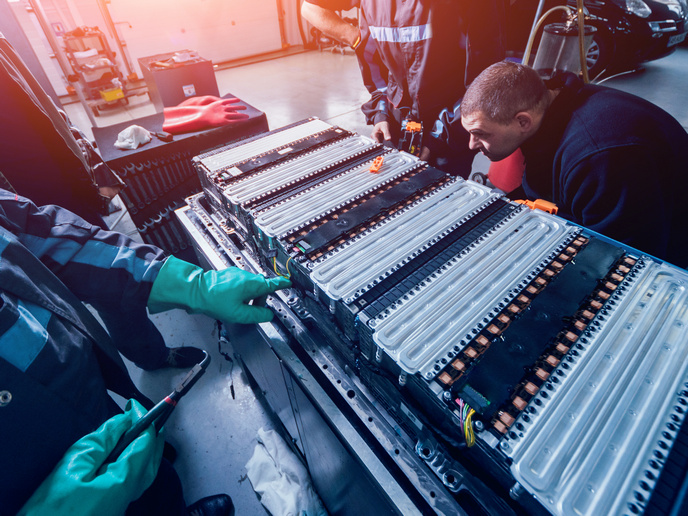Could self-healing batteries be the future of e-mobility?
A major advantage of lithium metal batteries is that they deliver very high energy density. This makes them hugely attractive for electric vehicles and other e-mobility applications, where supplying energy for long distances is crucial. “One of the challenges with these batteries is that their lifetime is still relatively short,” notes HIDDEN(opens in new window) project coordinator Marja Vilkman from the VTT Technical Research Centre(opens in new window) in Finland. “This is in part because the interface between the metallic lithium anode and the electrolyte is unstable.” Vilkman explains that, without intervention, metallic lithium strands – called dendrites – will start to ‘grow’ from the anode during charging and discharging cycles. This eventually leads to a short circuit.
Developing a novel self-healing electrolyte
The EU-funded HIDDEN project set out to develop self-healing methods to prevent this dendrite growth. “Our aim was to create a method using a novel liquid crystalline electrolyte,” says Vilkman. “We thought that this could both slow down dendrite growth, and potentially even break down formed dendrites and heal the battery on demand.” The project team also wanted to develop a self-healing separator with piezoelectric properties (i.e. the ability to generate an electric charge). This could help to slow down dendrite growth autonomously, without the need for external intervention. “We started by synthesising a novel self-healing electrolyte, using modelling to optimise the molecular structure,” explains Vilkman. “This material was tested mainly in small battery cells. For the self-healing separator, we used a commercially available material and created a process for making a porous separator out of it.” These processes were scaled up to pilot level. All materials were rigorously tested, and the capacity for self-healing reactions analysed.
Increased battery cell lifetime
The project team was able to prove in small test cells that the original concept of preventing dendrite growth works. It was even possible to bring a shorted cell back to life with the project’s self-healing protocol. “We also showed that it was possible to increase the lifetime of cells through using self-healing separators,” adds Vilkman. These results could open the door to the manufacturing of lithium metal batteries with high-energy density and long lifetimes. The possibilities here are huge, ranging from batteries for electric vehicles to wearable electronics and aviation. “The project has also helped to generate publicity about the role of batteries to a wider audience,” remarks Vilkman. “As it will not be possible to achieve Europe’s carbon neutrality targets(opens in new window) without citizen acceptance of electric vehicles or batteries, I think this can be seen as a major positive impact.”
Pioneering research around self-healing batteries
In the short term, the project has helped to create a wider research community around self-healing batteries. “For me personally, this has been an important achievement,” adds Vilkman. “We have been able to train and attract more people to work in this field, which is crucial for industry.” As research is still at an early stage, Vilkman notes that more work is needed to scale up the concept into practical cells with consistent quality. “We still aim to publish more results,” she says. “Our hope is that either us or some other organisation will be able to utilise the generated know-how to advance the technology further. We are currently looking for funding opportunities to continue this work.”







